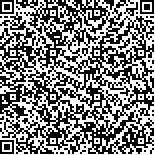附件
|
| 引用本文: | 黄昌春,李云梅,孙德勇,乐成峰,伍蓝,王利珍,王鑫.秋季太湖水下光场结构及其对水生态系统的影响.湖泊科学,2009,21(3):420-428. DOI:10.18307/2009.0317 |
| HUANG Changchun,LI Yunmei,SUN Deyong,LE Chengfeng,WU Lan,WANG Lizhen,WANG Xin.Underwater light field structure and its impact on aquatic ecosystems of Lake Taihu in autumn. J. Lake Sci.2009,21(3):420-428. DOI:10.18307/2009.0317 |
|
| |
|
|
| 本文已被:浏览 8079次 下载 5903次 |

码上扫一扫! |
|
|
| 秋季太湖水下光场结构及其对水生态系统的影响 |
|
黄昌春, 李云梅, 孙德勇, 乐成峰, 伍蓝, 王利珍, 王鑫
|
|
南京师范大学虚拟地理环境教育部重点实验室, 南京 210046
|
|
| 摘要: |
| 水生态系统中光能的分配很大程度上决定了水生态系统的结构和功能,利用2007年11-12月太湖水体光学特性和组分浓度数据,对秋季太湖水下光场结构特征和水体组分光竞争能力的表征光学量(漫衰减系数、平均余弦)和影响因素(吸收系数比重)进行了分析研究.结果表明,秋季太湖水下辐照度呈现单峰分布,最高值为583nm左右;根据Kd可将黄质和非色素物质主导程度的强弱分为弱、较强、强三个等级;Kd(PAR)平均值为4.61±1.54m-1,水体真光层厚度平均值为1.11±0.35m;太湖水下光场的光能主要分布在青光和黄绿光波长范围内,约占总能量的60%,蓝光和红光波长范围内的能量约占30%,这样的光谱结构有利于铜绿微囊藻和斜生栅藻的生长. |
| 关键词: 漫衰减系数 平均余弦 光合有效辐射 水生态系统 |
| DOI:10.18307/2009.0317 |
| 分类号: |
| 基金项目:国家自然科学基金项目(40571110);“十一五”国家科技支撑计划项目(2008BAC34B05);江苏省2008年度普通高校研究生科研创新计划(CX08B_015Z) |
|
| Underwater light field structure and its impact on aquatic ecosystems of Lake Taihu in autumn |
|
HUANG Changchun, LI Yunmei, SUN Deyong, LE Chengfeng, WU Lan, WANG Lizhen, WANG Xin
|
|
Key Laboratory of Virtual Geographic Environment, Ministry of Education, Nanjing Normal University, Nanjing 210046, P. R. China
|
| Abstract: |
| Allocation of light in the aquatic ecosystems determined the ecosystem function and type. Based on the measured data of optical properties and the concentrations of water substances in Lake Taihu during November to December, 2007, the optical parameters (diffuse attenuation coefficient, the average cosine) and impact factors (the proportion of absorption) were studied. The results showed that: the irradiation showed a single peak distribution and the max value was at 583nm wavelength; the dominant degree of CDOM and Non-pigment particles could be divided into weak, strong, stronger according to the Kd; the average value of Kd (PAR) and depth of the euphotic zone is 4.61±1.54m-1 and 1.11±0.35m, respectively; solar energy was mainly distributed in the cyan, green and yellow wavelength range, which was about 60 percent of the total energy, it just about 30 percent in blue and red wavelength. This spectral structure favored the growth of Microcystis aeruginosa and Scenedesmus obliquus. |
| Key words: Diffuse attenuation coefficient average cosine photosynthetically active radiation aquatic ecosystem |
|
|
|
|